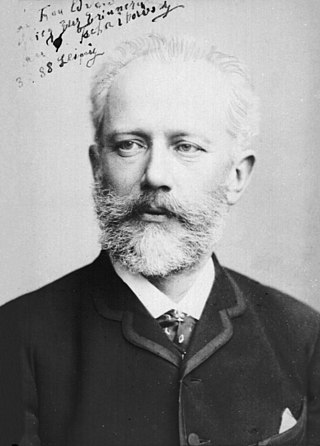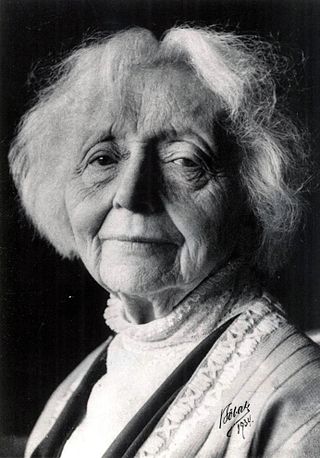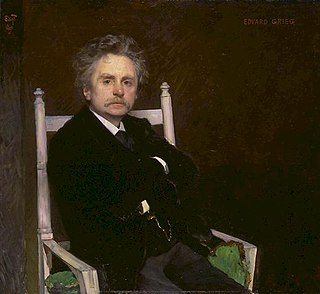Related Research Articles

Edvard Hagerup Grieg was a Norwegian composer and pianist. He is widely considered one of the leading Romantic era composers, and his music is part of the standard classical repertoire worldwide. His use of Norwegian folk music in his own compositions brought the music of Norway to fame, as well as helping to develop a national identity, much as Jean Sibelius did in Finland and Bedřich Smetana in Bohemia.

The Piano Concerto in A minor, Op. 16, composed by Edvard Grieg in 1868, was the only concerto Grieg completed. It is one of his most popular works, and is among the most popular of the genre. Grieg, being only 24 years old at the time of the composition, had taken inspiration from Robert Schumann's only concerto, also being in A minor.

The Nutcracker, Op. 71, is an 1892 two-act classical ballet by Pyotr Ilyich Tchaikovsky, set on Christmas Eve at the foot of a Christmas tree in a child's imagination. The plot is an adaptation of E. T. A. Hoffmann's 1816 short story The Nutcracker and the Mouse King. The ballet's first choreographer was Marius Petipa, with whom Tchaikovsky had worked three years earlier on The Sleeping Beauty, assisted by Lev Ivanov. Although the complete and staged The Nutcracker ballet was not as successful as had been the 20-minute Nutcracker Suite that Tchaikovsky had premiered nine months earlier, The Nutcracker soon became popular.

Rikard Nordraak was a Norwegian composer. He is best known as the composer of the Norwegian national anthem, "Ja, vi elsker dette landet".
George Forrest was an American writer of music and lyrics for musical theatre best known for the show Kismet, adapted from the works of Alexander Borodin. He was also known professionally at times as Chet Forrest.
Robert Craig Wright was an American composer-lyricist for Hollywood and the musical theatre, best known for the Broadway musical and musical film Kismet, for which he and his professional and romantic partner George Forrest adapted themes by Alexander Borodin and added lyrics. Kismet was one of several Wright and Forrest creations that was commissioned by impresario Edwin Lester for the Los Angeles Civic Light Opera. Song of Norway, Gypsy Lady, Magdalena, and their adaptation of The Great Waltz were also commissioned by Lester for the LACLO. The LACLO passed most of these productions to Broadway.

Nina Grieg, née Hagerup was a Danish–Norwegian lyric soprano.

Lyric Pieces is a collection of 66 short pieces for solo piano written by Edvard Grieg. They were published in 10 volumes, from 1867 to 1901. The collection includes several of his best known pieces, such as Wedding Day at Troldhaugen, To Spring, March of the Trolls (Trolltog), and Butterfly (Sommerfugl).

Troldhaugen is the former home of Norwegian composer Edvard Grieg and his wife Nina Grieg. Troldhaugen is located in Bergen, Norway and consists of the Edvard Grieg Museum, Grieg's villa, the hut where he composed music, and his and his wife's gravesite.
Edvard Grieg composed his Funeral March in Memory of Rikard Nordraak in 1866, in honour of his friend and fellow Norwegian composer Rikard Nordraak, who had died in March of that year at the age of 23. Grieg deeply respected his fellow musician and took no delay in producing the work. The march was originally written as a piano piece in A minor; Grieg also produced transcriptions of it for brass choir and wind band, in B♭ minor.
The Bergen Philharmonic Orchestra is a Norwegian orchestra based in Bergen. Its principal concert venue is the Grieg Hall.

Grieg Hall is a 1,500 seat concert hall located on Edvard Griegs' square in Bergen, Norway.

Anya is a musical with a book by George Abbott and Guy Bolton and music and lyrics by Robert Wright and George Forrest. As they had done with Song of Norway (1944) and Kismet (1953), Wright and Forrest developed the musical score using themes written by a classical composer, in this case Sergei Rachmaninoff.

Song of Norway is a 1970 American biographical drama musical film adaptation of the successful operetta of the same name, directed by Andrew L. Stone.
Symphony in C, originally titled Le Palais de Cristal, is a ballet choreographed by George Balanchine, to Georges Bizet's Symphony in C. The ballet was originally created for the Paris Opera Ballet, and premiered on July 28, 1947 at Théâtre National de l'Opéra.
Helena Bliss was an American actress and singer. A talented soprano, she actively performed in musicals, operettas, and operas in the United States, both on stage and on television and radio, from the 1930s through the 1950s. She is best known for her portrayal of Nina Hagerup in the original Broadway production of Robert Wright and George Forrest's Song of Norway. She also appeared successfully in a few productions on London's West End.

Haugtussa, Op. 67, or The Mountain Maid, is a song cycle for soprano and piano composed by Edvard Grieg in 1895 and published in 1898. Even though Grieg wrote a total of 181 songs, this is the only song cycle in his entire output. The text was written by the Norwegian writer Arne Garborg, an excerpt from his book of poetry Haugtussa. It tells the story of Haugtussa, a young herding girl, and her first love affair with a boy, her first heartache. Both the lyrics, which brim over with imagery of gurgling brooks and tasty blueberries, and the music that mimics this imagery, intertwine the main character’s personal story and the mystic spring-like landscape that surrounds her, which may even motivate it.
Alfred Janson was a Norwegian pianist and composer. He was born in Oslo as the son of sculptor Gunnar Janson and pianist Margrethe Gleditsch, and was brother of journalist Mette Janson. He was first married to actress and singer Grynet Molvig and later to Berit Gustavsen. He made his piano debut in 1962. Among his early compositions is the piano piece November from 1962 and the orchestral Vuggesang from 1963. He composed the ballet Mot solen for the Bergen International Festival in 1969, and in 1991 he was the festival's principal composer.
"Wedding Day at Troldhaugen" is a composition for piano by Edvard Grieg. It is the sixth piano piece in the eighth book of his Lyric Pieces, bearing the opus number 65.
References
- ↑ City Opera: Life of Grieg In Song Of Norway (New York Times by Donal Henaham. Published: September 5, 1981)
- ↑ Hischak, Thomas (2008). The Oxford Companion to the American Musical: Theatre, Film andTelevision. New York City: Oxford University Press. p. 694.
- ↑ Suskin, Steven."The 1959 Jones Beach Revival of Song of Norway and London's Most Happy Fella" Archived 2010-09-07 at the Wayback Machine playbill.com, September 5, 2010